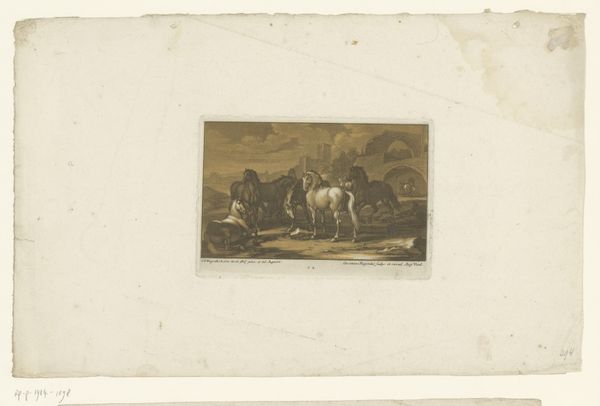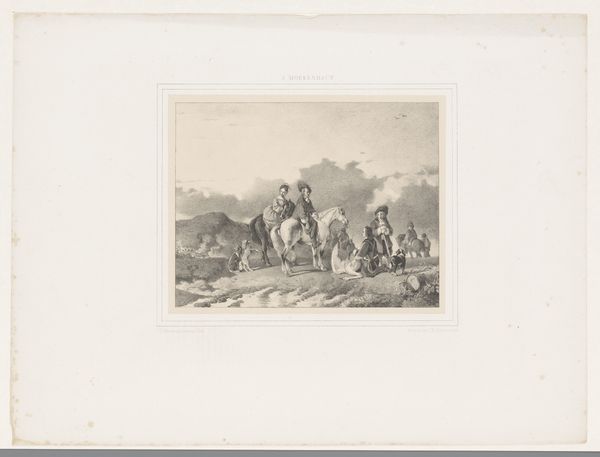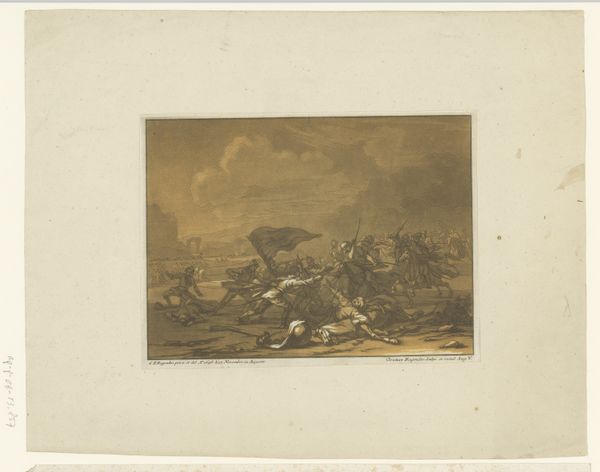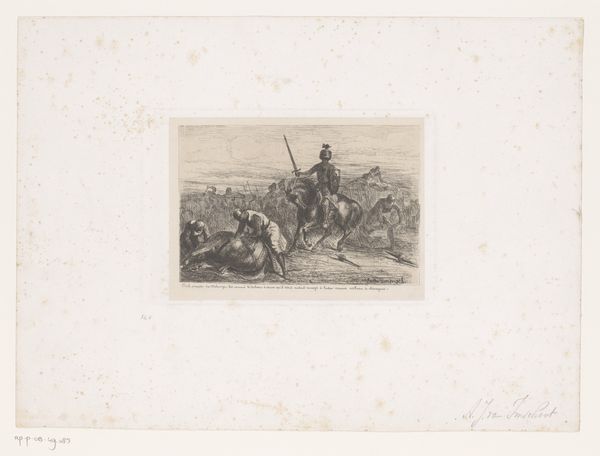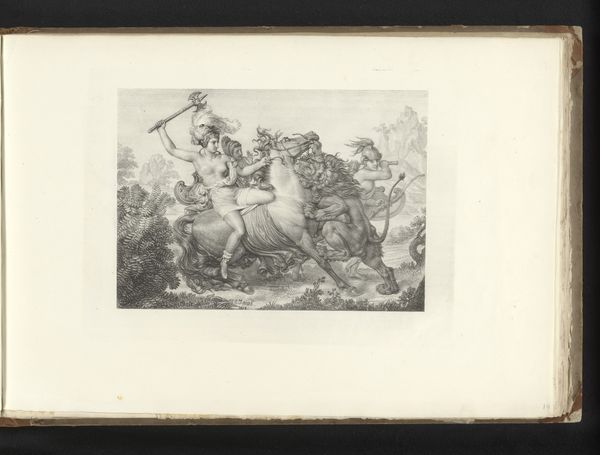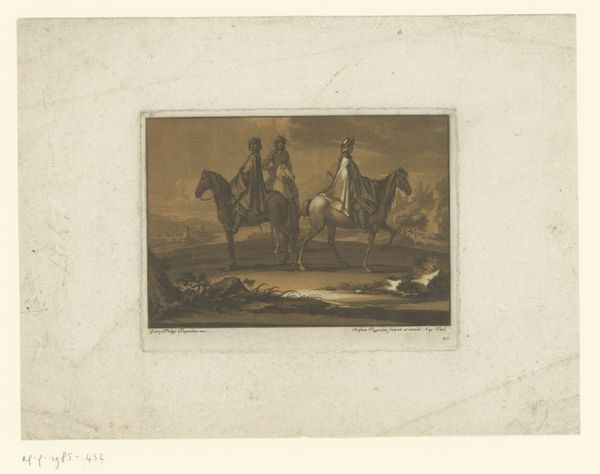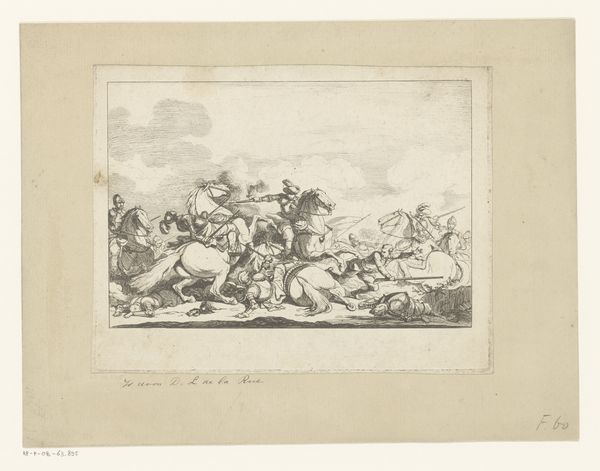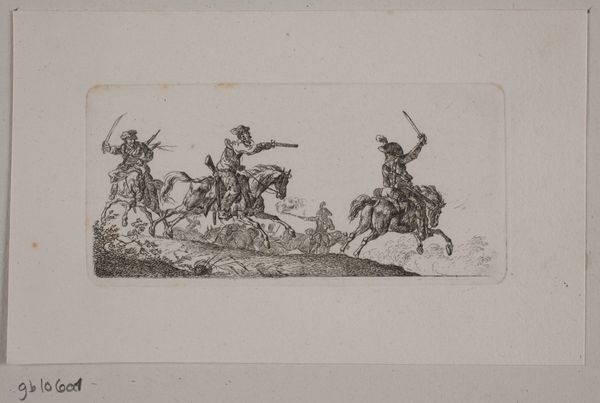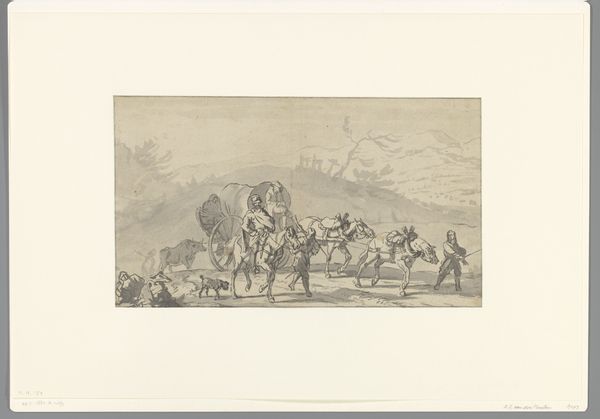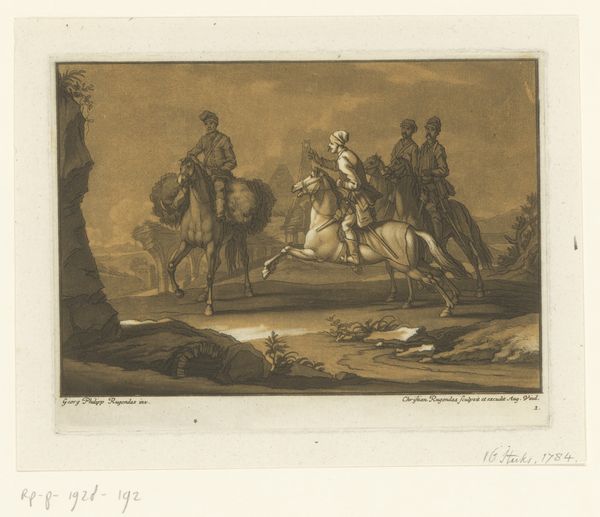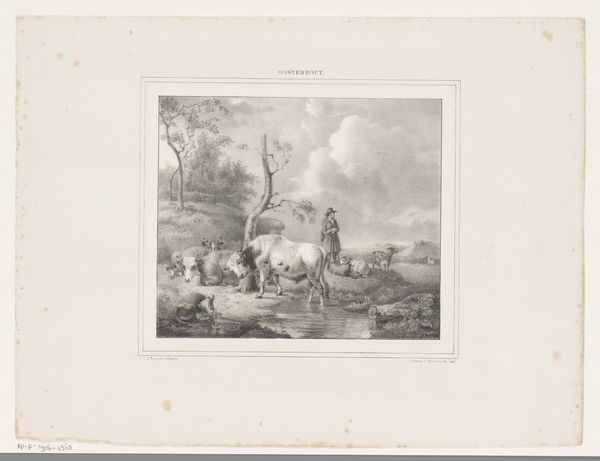
print, engraving
#
baroque
# print
#
landscape
#
figuration
#
line
#
genre-painting
#
history-painting
#
engraving
#
watercolor
Dimensions: height 103 mm, width 238 mm
Copyright: Rijks Museum: Open Domain
Editor: Here we have “Ruitergevecht,” or “Cavalry Battle,” an engraving from sometime between 1718 and 1781 by Christian Rugendas. It definitely gives off a chaotic energy! What's your take? What stands out to you in this piece? Curator: Ah, yes! Chaos caught mid-gallop, almost a Baroque mosh pit if you will. But beneath the surface frenzy, I sense something more. What strikes me isn't just the *what* - men clashing, horses rearing - but *how* Rugendas captures it. The line work, despite depicting intense action, feels strangely elegant, like a dance choreographed by… well, war. Don’t you think there’s something undeniably romantic, or perhaps romanticized, about how war is portrayed here? No mud, no grit – just stylized combat? Editor: I see what you mean about the romantic aspect. The riders' poses are so... dramatic. I suppose, that’s also why the word Baroque came to my mind earlier. But is there any specific event depicted here, or is it a more generic battle scene? Curator: That's a fantastic question! The ‘history-painting’ theme implies some specific historical reference point, but more likely, Rugendas seeks to glorify the "idea" of battle – courage, skill, the thrill of victory - rather than document an actual event. The overall feel definitely emphasizes grandeur over accuracy. It feels a bit staged, don't you agree? Like theater on horseback. Editor: Absolutely, theater is spot on! So, by looking at how the battle is portrayed in such a "theatrical" and glorified way, does it tell us more about the cultural perception of conflict in that period? Curator: Precisely! Think about it: war as spectacle, leadership as heroism...it's not so much a reflection of grim reality as a projection of societal ideals. A very effective piece of propaganda, though arguably for aesthetic pleasure too. And perhaps…even a little bit tragic? Because all that pomp masks an underlying sense of loss. What a whirlwind of paradoxes, all in one print! Editor: This makes so much more sense now, considering how much emphasis we tend to put on history painting for understanding not just *what* happened, but also *how* people chose to remember it. Thanks for sharing! Curator: My pleasure! Now, go forth and dissect the world, one artwork at a time!
Comments
No comments
Be the first to comment and join the conversation on the ultimate creative platform.
